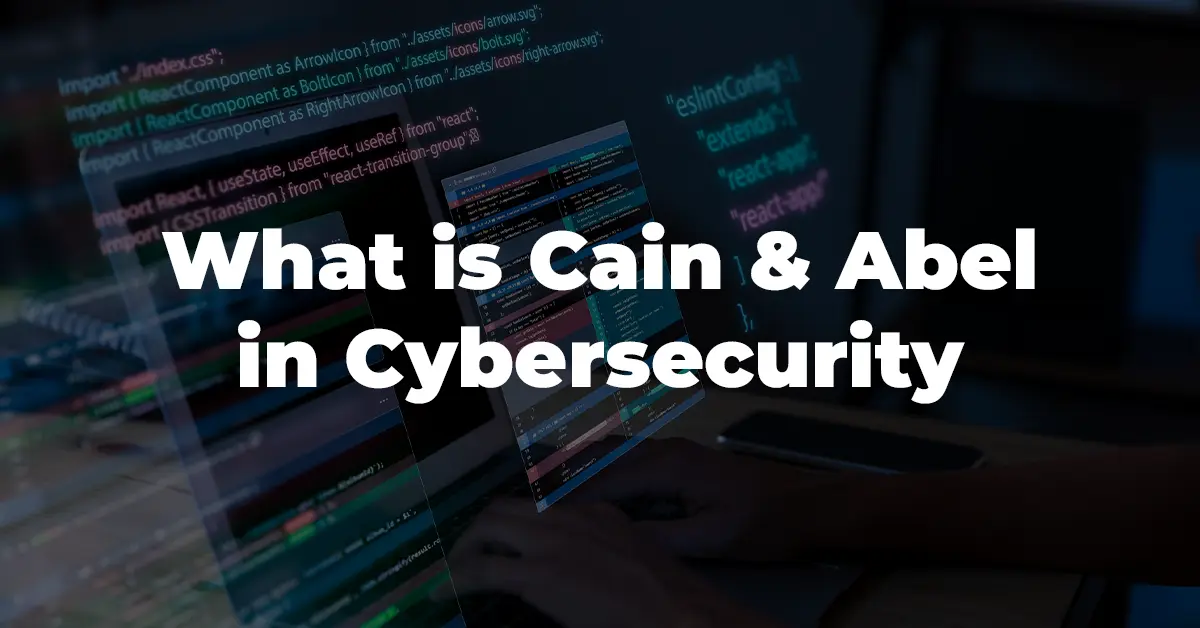Cain and Abel is a tool that often sparks debate in cybersecurity circles. This article explores what Cain and Abel is, how it works, and why it’s important for IT professionals, ethical hackers, and cybersecurity students. As a powerful utility capable of password recovery, packet sniffing, and hash cracking, it holds a unique position in both ethical and malicious environments. Its dual-use nature makes it valuable for penetration testing but also a concern for unauthorized exploitation. Understanding the tool’s purpose and limitations is essential for anyone looking to use it within legal and professional boundaries.
Understanding Cain and Abel as a Tool
What is Cain and Abel?
Cain and Abel is a password recovery and network analysis tool specifically designed for Windows systems. It helps users identify security flaws by performing various tasks such as network sniffing, cracking password hashes, and revealing stored credentials. Security professionals and ethical hackers use it in lab environments to simulate attacks and assess vulnerabilities before real threats exploit them. The tool supports multiple attack vectors and password recovery methods, making it one of the most comprehensive free utilities for local network security testing.
Developer Background and History
Cain and Abel was developed by Massimiliano Montoro, a security researcher who released the tool in the early 2000s. Initially intended for legitimate password recovery, its versatility quickly gained attention from both white hat and black hat users. Over time, the tool evolved into a staple of cybersecurity education, featured in many penetration testing courses and ethical hacking certification labs. Although it hasn’t been actively updated in recent years, it remains a well-known utility for learning about network vulnerabilities and authentication protocols.
Core Functionalities of Cain and Abel
Password Cracking Techniques
Cain and Abel uses several password cracking techniques to recover or test credentials. Among its most common methods are brute force attacks, dictionary-based attacks, and cryptanalysis using precomputed tables. These approaches simulate how attackers might try to gain unauthorized access to systems by exploiting weak or reused passwords. By applying these techniques in a controlled environment, cybersecurity professionals can evaluate the strength of existing authentication measures and recommend improvements accordingly.
Network Packet Sniffing and ARP Poisoning
One of Cain and Abel’s standout features is its ability to sniff network traffic and conduct ARP poisoning attacks. This allows the tool to intercept data packets traveling over local area networks, exposing sensitive information such as usernames, passwords, and session tokens. Using Address Resolution Protocol (ARP) spoofing, it can position itself between two endpoints to act as a man-in-the-middle, a common tactic used by attackers. Security analysts use this function in labs to understand how unencrypted traffic can be compromised and how secure configurations can prevent such intrusions.
Hash Cracking and Decryption
Cain and Abel supports the extraction and cracking of various password hash types including MD5, NTLM, and LM hashes. This functionality is crucial in password auditing, allowing professionals to assess how easily credentials can be reversed when stored insecurely. By testing different hashing algorithms, teams can determine whether their systems are using outdated or vulnerable security practices. The tool’s built-in decryption features make it especially useful for demonstrating the risks of weak or improperly stored authentication data.
Ethical Use and Legal Considerations
White Hat vs. Black Hat Usage
Cain and Abel, like many cybersecurity tools, is neutral by design—its legality depends entirely on how it’s used. Ethical hackers, often referred to as white hats, use Cain and Abel within permissioned environments to identify security flaws and strengthen systems. They deploy it in controlled scenarios such as penetration tests to simulate real-world attacks and evaluate risk. In contrast, black hat users employ the same functionalities for malicious purposes, such as stealing passwords, spying on users, or infiltrating networks without authorization. This difference in intent and context separates lawful use from criminal activity.
Legal Risks and Compliance Issues
Unauthorized use of Cain and Abel can lead to serious legal consequences. Deploying the tool without consent, even in seemingly harmless situations, can violate national and international data protection laws such as the GDPR or HIPAA. Many countries consider unauthorized access to digital systems a criminal offense, regardless of intent. Companies operating under strict regulatory frameworks must ensure that all security testing—including tools like Cain and Abel—is conducted under signed agreements and ethical hacking policies. Misuse of the tool, especially on live networks or customer data, can result in fines, lawsuits, or even criminal prosecution.
Practical Use Cases in Cybersecurity
Penetration Testing Training Environments
Cain and Abel remains a staple in hands-on cybersecurity learning environments. Platforms like Hack The Box and TryHackMe often include modules or lab scenarios that simulate real-world vulnerabilities, where learners can safely explore the tool’s capabilities. These environments are isolated and legally approved for testing, providing a practical sandbox for mastering password recovery, sniffing techniques, and ARP spoofing. For students preparing for certifications or professionals refining their skills, Cain and Abel helps build a foundational understanding of how threat actors operate and how to defend against them.
Internal Audits and Network Hardening
IT departments and cybersecurity teams may also use Cain and Abel for internal audits, particularly within Windows-based infrastructure. By simulating password attacks, sniffing unencrypted traffic, or testing hash strength, teams can proactively identify weak points before attackers exploit them. These exercises are typically conducted in controlled network segments with explicit permission, ensuring legal compliance while uncovering real vulnerabilities. The insights gained through this process support stronger policy implementation, employee training, and improvements to network configurations and access control.
Risks, Limitations, and Obsolescence
Security Risks of Installation
Cain and Abel is a powerful tool, but its aggressive features can cause it to be flagged as malicious by most modern antivirus and endpoint protection software. Its capabilities—such as ARP poisoning, password extraction, and sniffing network traffic—are also commonly used by actual malware, making detection inevitable. As a result, installing and running Cain and Abel on a production machine or unsecured environment poses real risks. To prevent accidental exposure or data leaks, cybersecurity professionals are strongly advised to use the tool only within isolated virtual machines or sandboxed test labs, where there is no connection to sensitive systems or live networks.
Compatibility and Modern Relevance
The development of Cain and Abel has been discontinued, and its compatibility is limited to legacy Windows operating systems, particularly Windows XP and Windows 7. It does not support modern Windows versions, 64-bit architecture, or updated security protocols. While it remains useful for understanding the basics of network vulnerabilities and password cracking, its practical relevance has declined. Professionals and educators now often favor updated tools that are actively maintained and compliant with current operating systems and security standards.
Cain and Abel vs. Modern Tools
Comparison with John the Ripper and Hashcat
In today’s cybersecurity landscape, Cain and Abel has largely been replaced by more powerful and efficient tools such as John the Ripper and Hashcat. These modern tools offer broader algorithm support, faster performance through GPU acceleration, and compatibility with multiple platforms beyond Windows. While Cain and Abel includes a graphical interface and multi-functionality in one package, it lacks the speed, scalability, and community support of its successors. John the Ripper is widely used in password auditing across Unix-like systems, and Hashcat is considered one of the fastest password recovery tools available today. Both are also more frequently used in enterprise penetration testing and CTF competitions, further highlighting their professional acceptance and ethical applicability.
Conclusion and Final Thoughts
Cain and Abel has played a significant role in shaping cybersecurity education and awareness. As one of the earliest free tools for password recovery and network vulnerability analysis, it helped professionals and students understand how attackers think and operate. However, its legacy is mixed—its dual-use nature means it can be both a learning instrument and a threat, depending on intent and context. Today, while its active usage has declined due to technical limitations, the lessons it offers remain valuable. Security enthusiasts are encouraged to explore ethical hacking within legal frameworks and with modern, trusted tools. Continuous learning and adaptation to evolving cybersecurity threats are essential for staying relevant and effective in the field.






